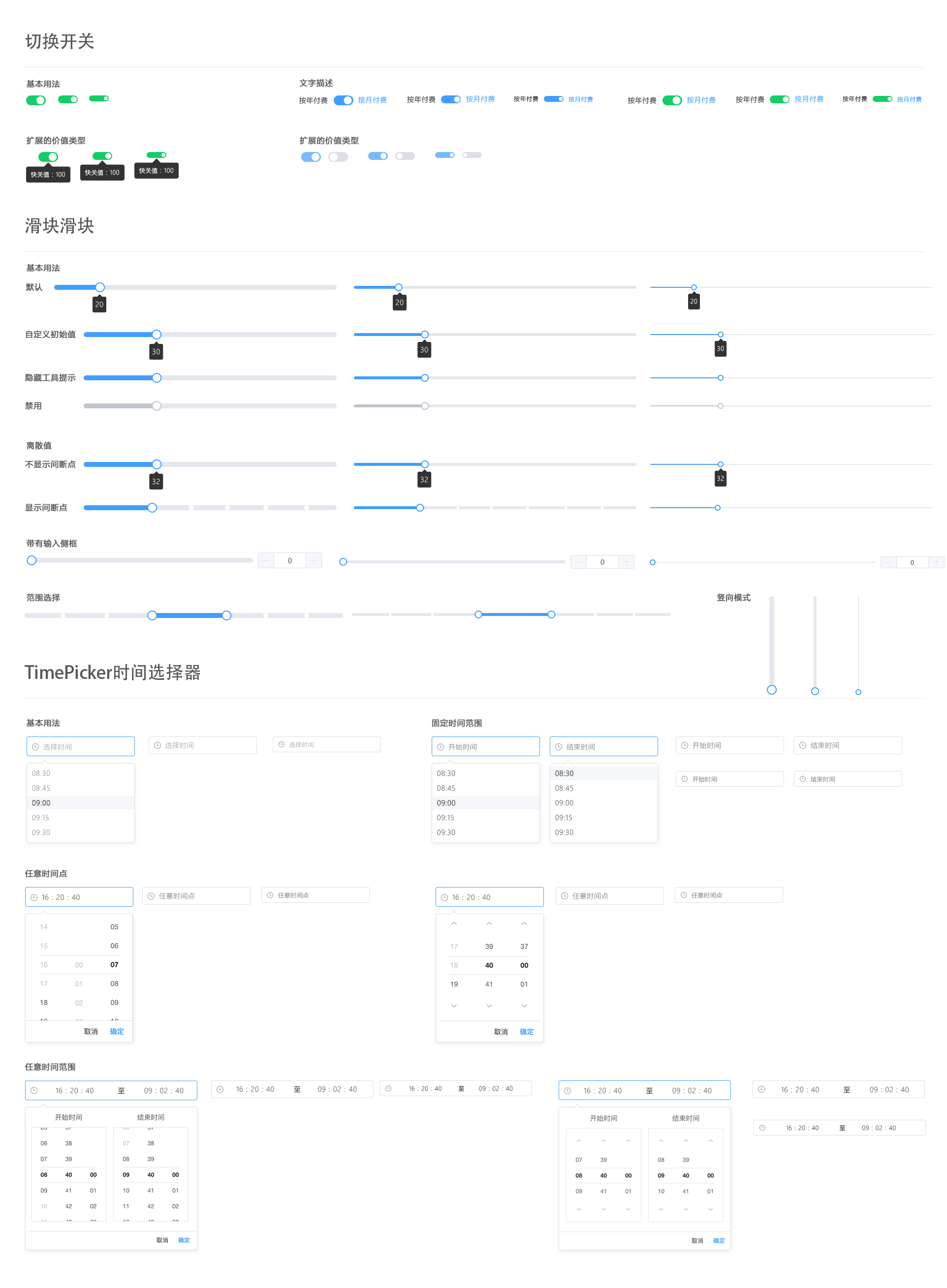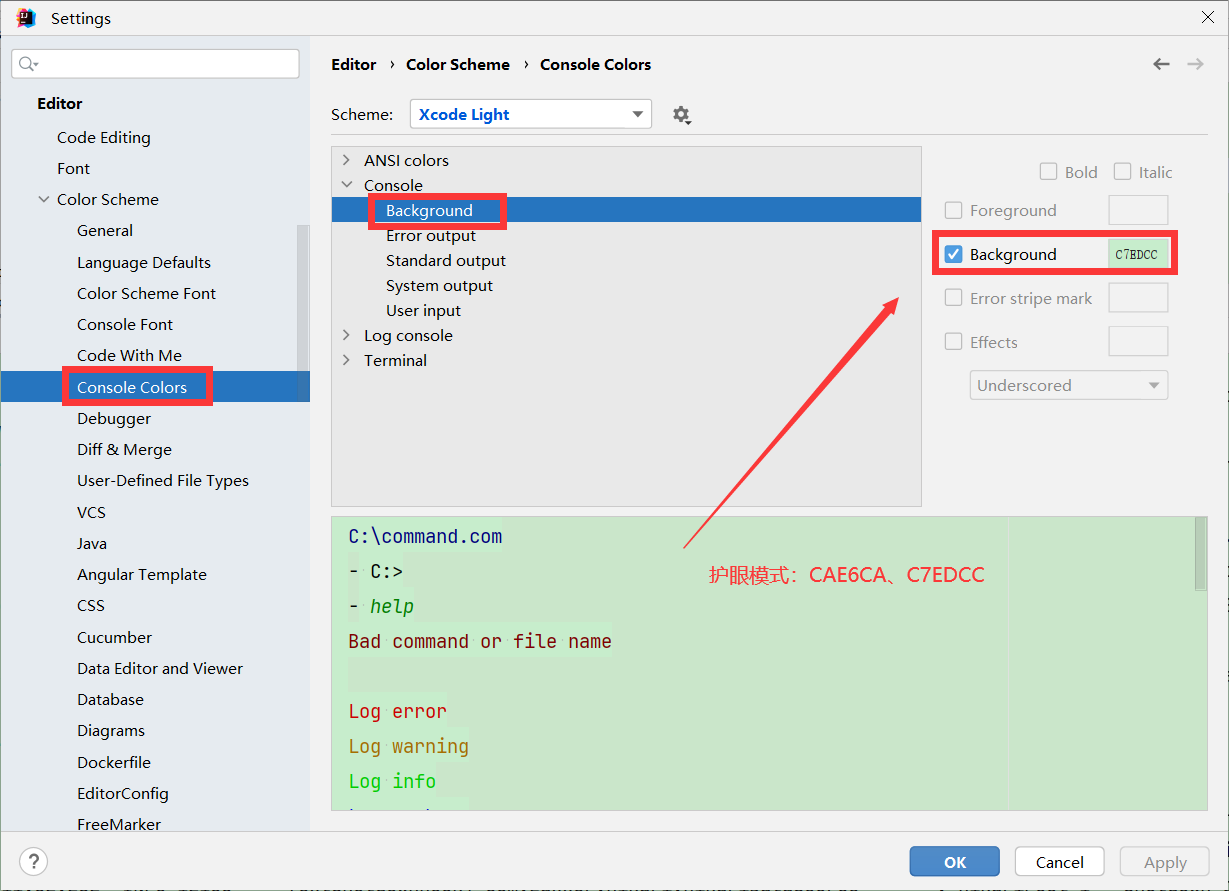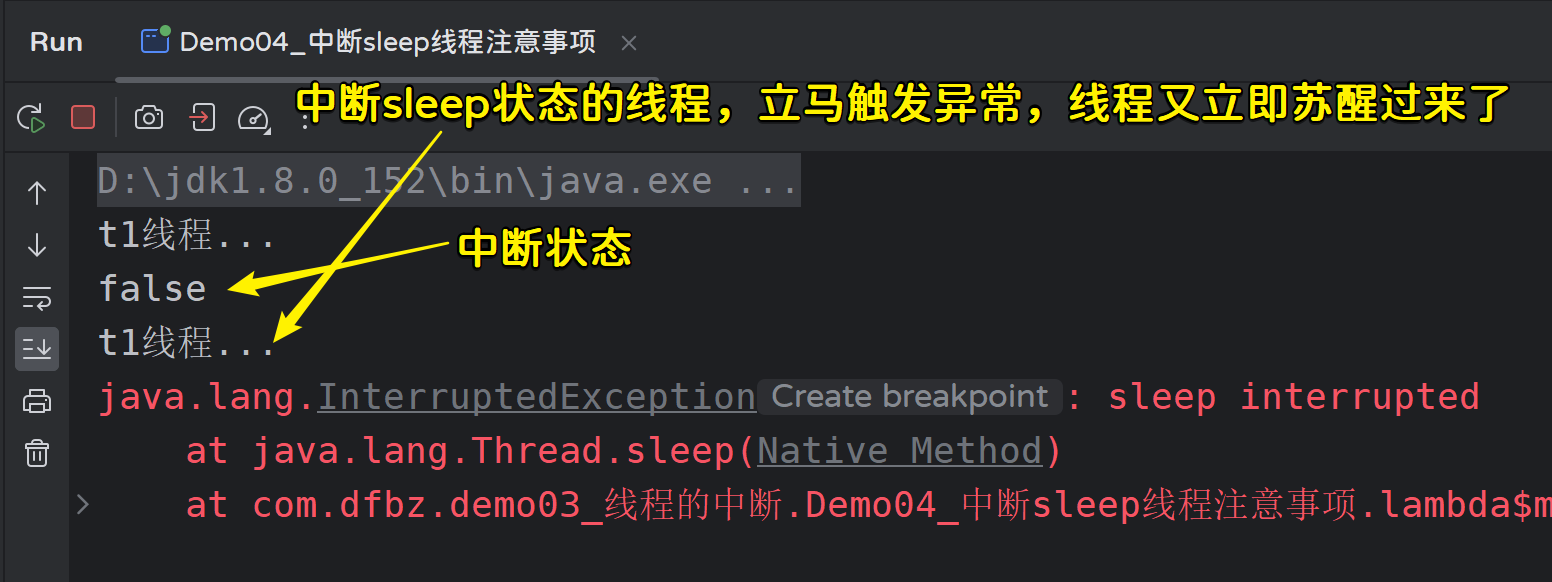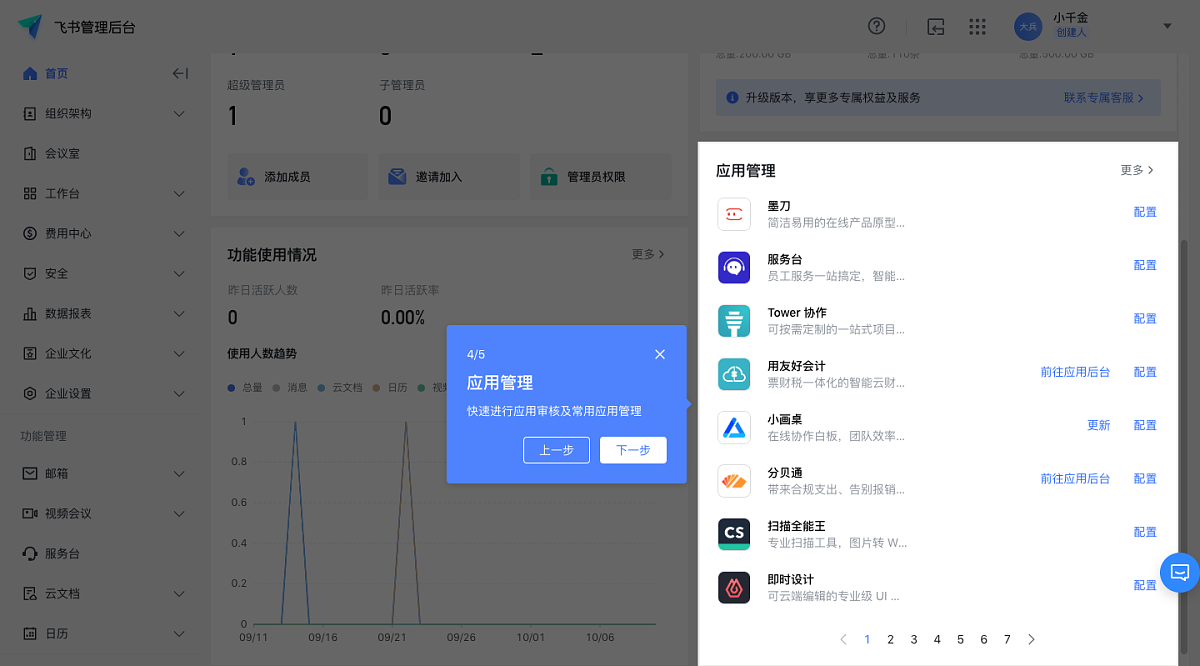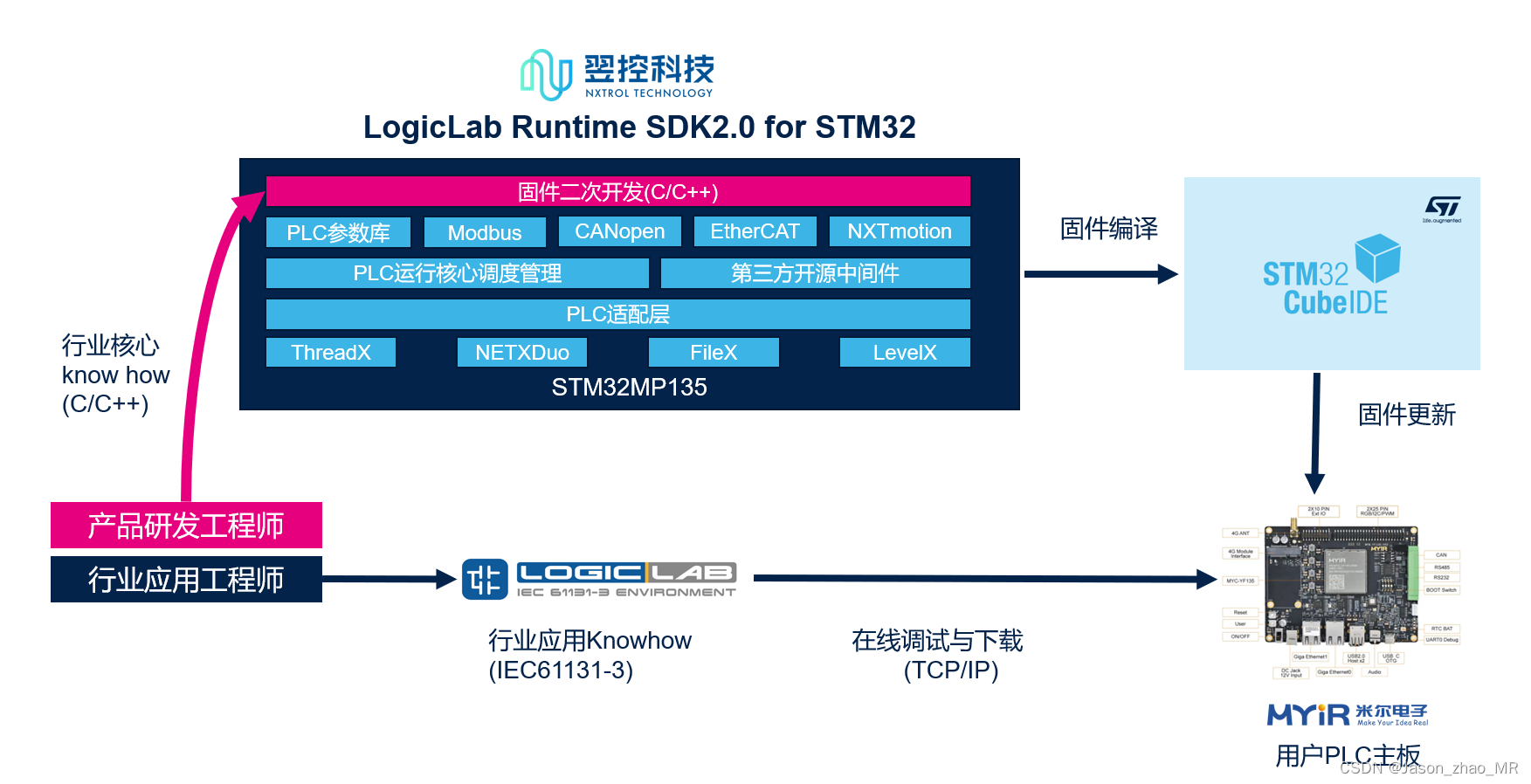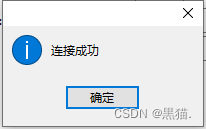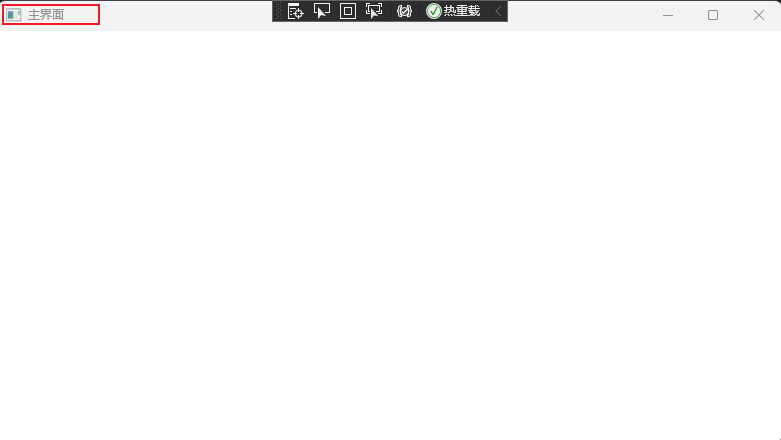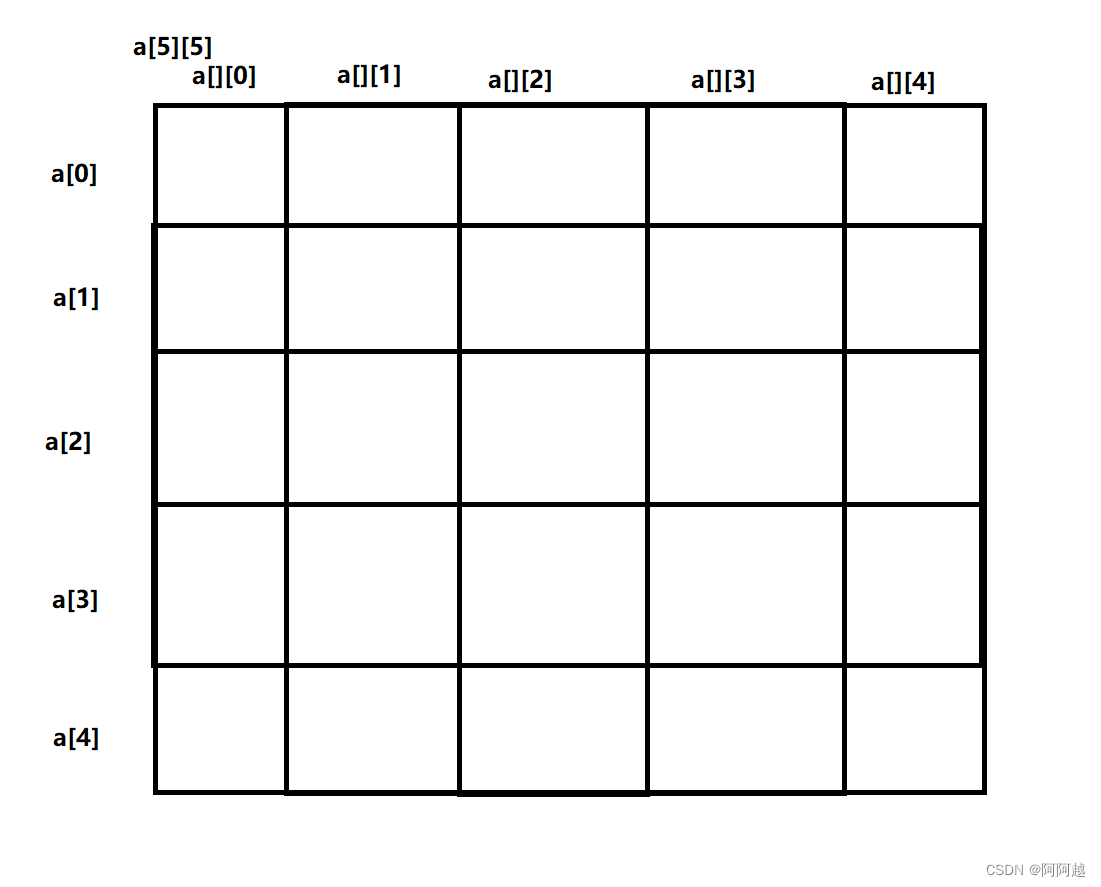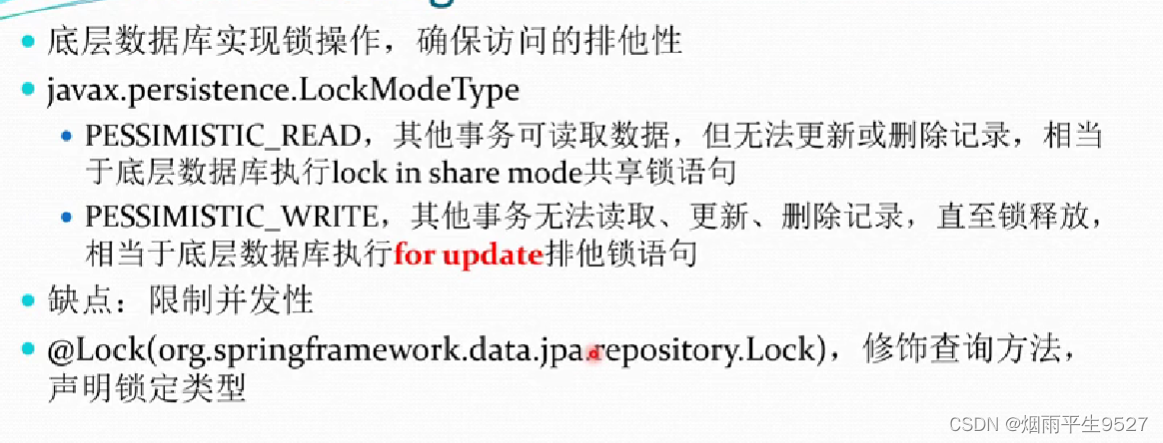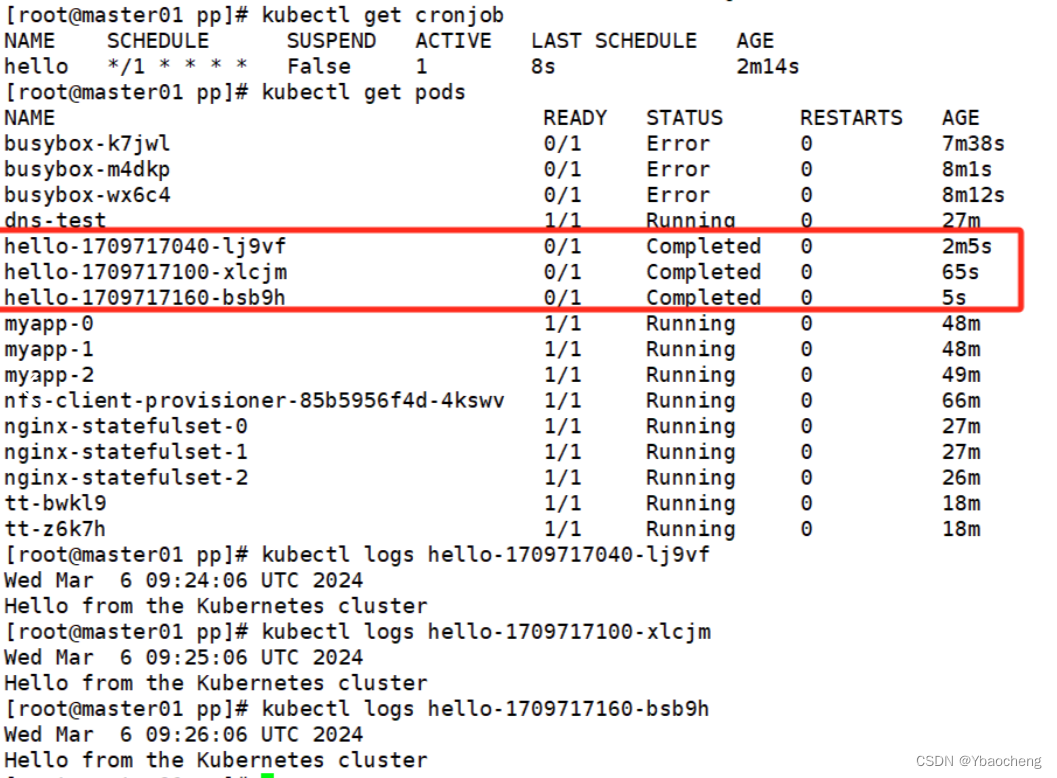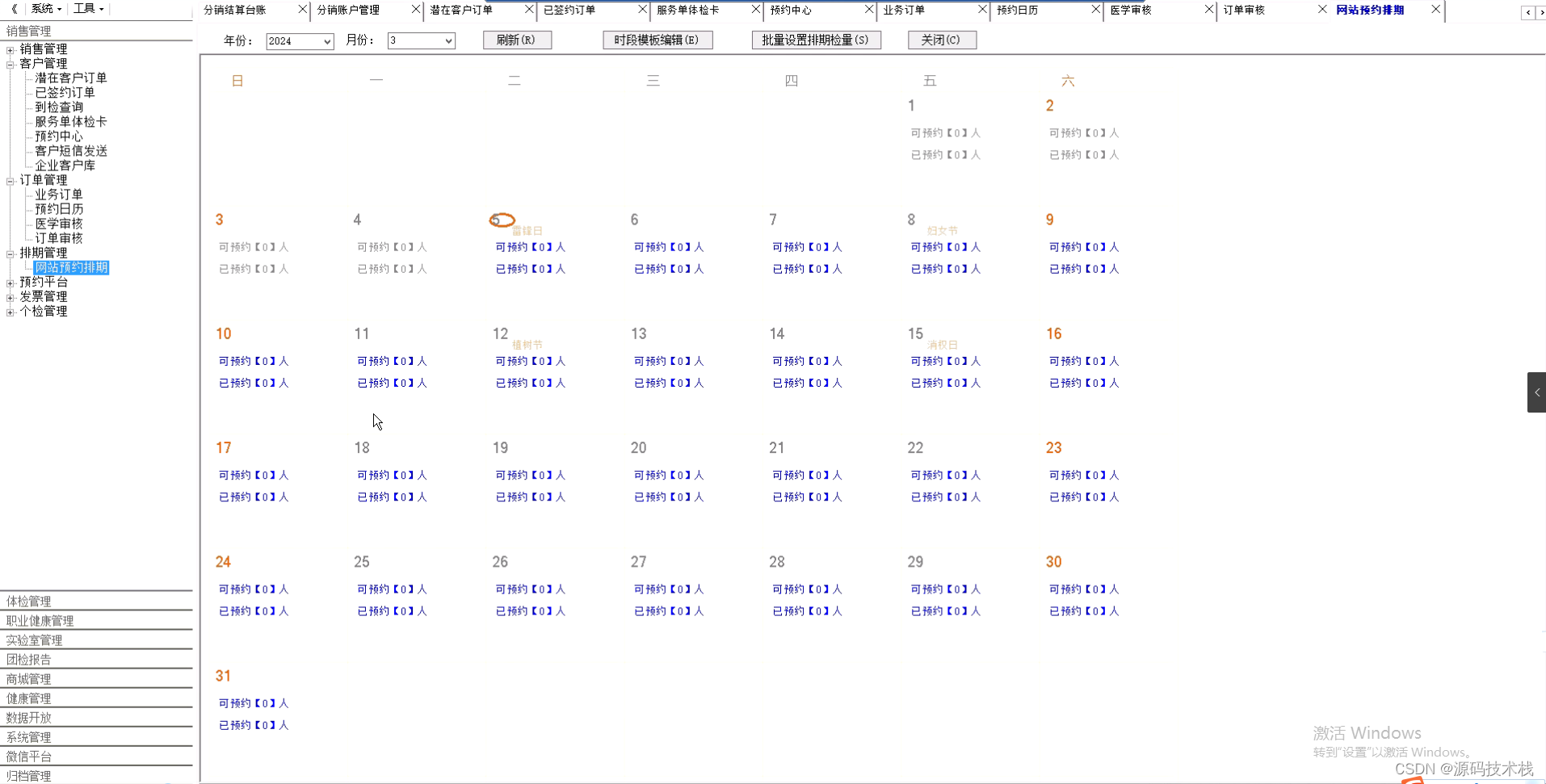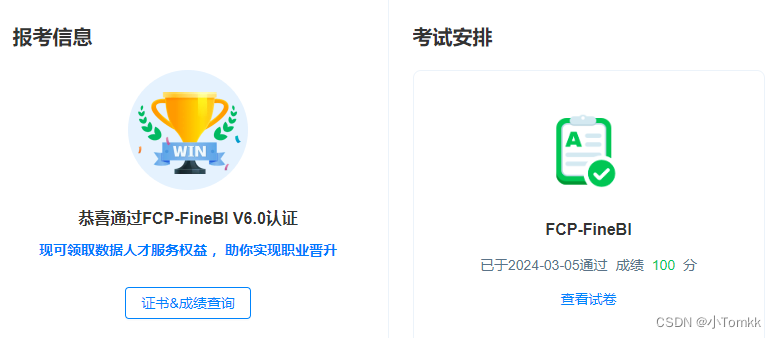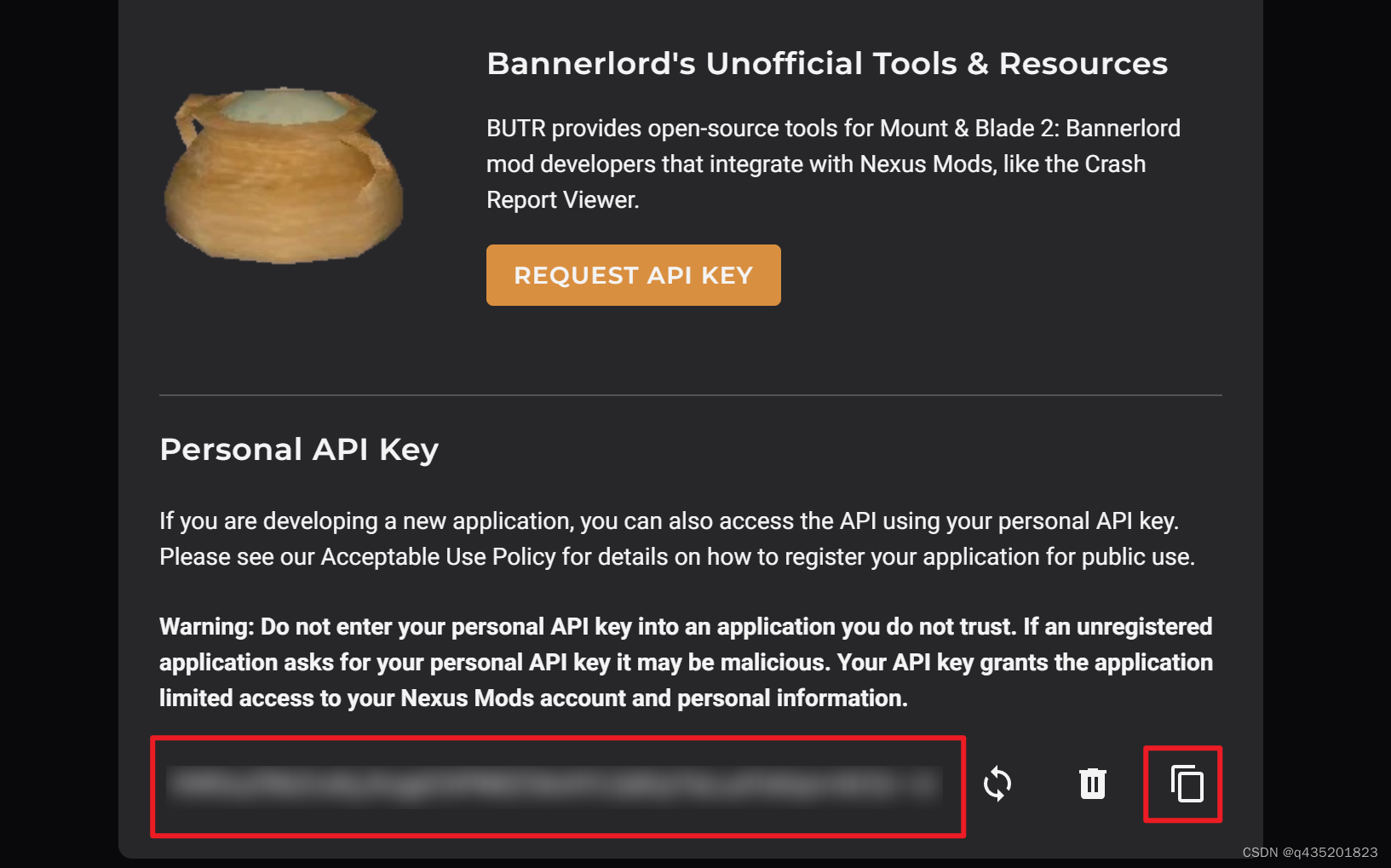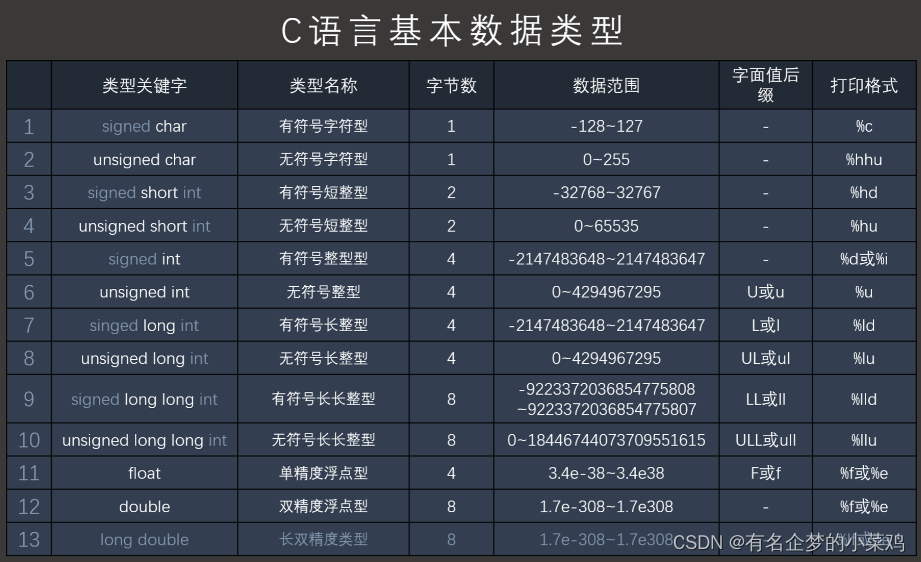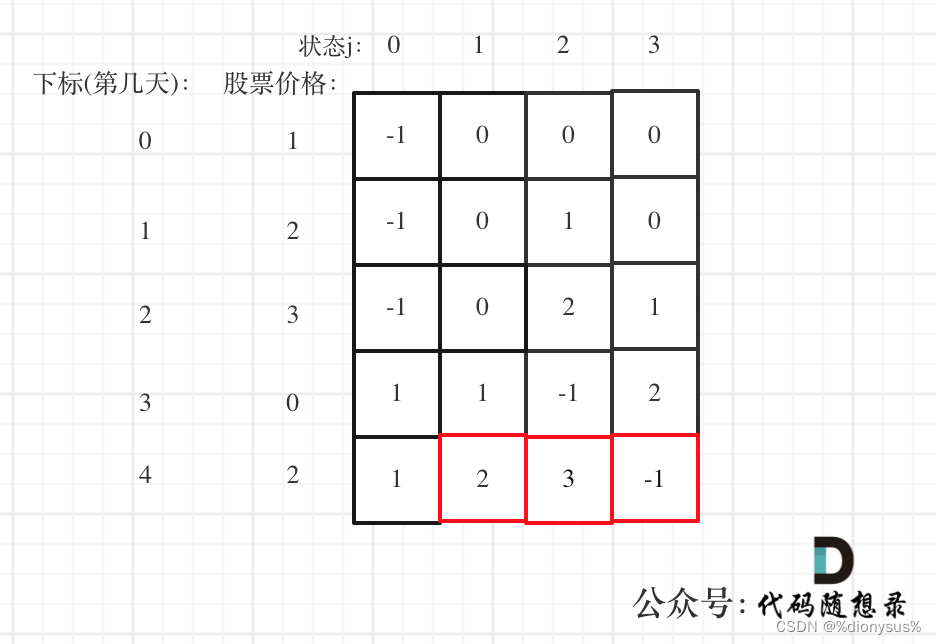之前漏了个功能支持,那就是WhoNet上报的DBF文件导出,因为DBF基本没什么人在用了,实现DbfUtil供业务写DBF文件做WhoNet上报导出用。
DBF读写工具类
package JRT.Core.Util;
import com.linuxense.javadbf.DBFDataType;
import com.linuxense.javadbf.DBFField;
import com.linuxense.javadbf.DBFReader;
import com.linuxense.javadbf.DBFWriter;
import java.io.File;
import java.io.FileInputStream;
import java.io.FileOutputStream;
import java.io.IOException;
import java.nio.charset.Charset;
import java.util.ArrayList;
import java.util.HashMap;
import java.util.List;
import java.util.Map;
/**
* 供业务逻辑读写DBF文件的工具类。先创建空的DBF文件,再写入数据
*/
public class DbfUtil {
/**
* 创建dbf空文件
*
* @param path 文件路径
* @param fields 字段信息
* @param charsetName 编码字符集
* @throws IOException
*/
public static void CreateDbf(String path, DBFField[] fields, String charsetName) throws IOException {
//定义DBFWriter实例用来写DBF文件
DBFWriter dbfWriter = new DBFWriter(new FileOutputStream(path), Charset.forName(charsetName));
//设置字段
dbfWriter.setFields(fields);
//写入dbf文件并关闭
dbfWriter.close();
}
/**
* 创建dbf空文件
*
* @param path 文件路径
* @param fieldList dbf字段,需要设定name,length两个参数,类型默认为字符串,可以参考从标准dbf文件中读取出来的样式。
* @param charsetName 编码字符集 编码字符集
* @throws IOException
*/
public static void CreateDbf(String path, List<Map<String, String>> fieldList, String charsetName) throws IOException {
DBFField[] fields = new DBFField[fieldList.size()];
int index = 0;
for (Map<String, String> fieldMap : fieldList) {
DBFField field = new DBFField();
//字段名称
field.setName(fieldMap.get("name"));
//指定字段类型为字符串
field.setType(DBFDataType.CHARACTER);
//指定长度
field.setLength(Integer.valueOf(fieldMap.get("length")));
fields[index] = field;
index++;
}
//定义DBFWriter实例用来写DBF文件
DBFWriter dbfWriter = new DBFWriter(new FileOutputStream(path), Charset.forName(charsetName));
//设置字段
dbfWriter.setFields(fields);
//写入dbf文件并关闭
dbfWriter.close();
}
/**
* 获取字段名
*
* @param path 路径
* @param charsetName 字符集
* @return 字段名数组
* @throws IOException
*/
public static String[] GetFieldName(String path, String charsetName) throws IOException {
DBFReader dbfReader = new DBFReader(new FileInputStream(path), Charset.forName(charsetName));
int fieldCount = dbfReader.getFieldCount();//获取字段数量
String[] fieldName = new String[fieldCount];
for (int i = 0; i < fieldCount; i++) {
fieldName[i] = dbfReader.getField(i).getName();
}
dbfReader.close();
return fieldName;
}
/**
* 使用读取dbf文件作为模板,写dbf文件
*
* @param pathRead dbf文件头模板
* @param pathWriter dbf写文件路径
* @param rowList 要写入的记录行
* @param charsetName 字符集
* @throws IOException
*/
public static void WriteDbf(String pathRead, String pathWriter, List<Map<String, Object>> rowList, String charsetName) throws IOException {
DBFReader dbfReader = new DBFReader(new FileInputStream(pathRead), Charset.forName(charsetName));
//获取字段数量
int fieldCount = dbfReader.getFieldCount();
DBFField[] fields = new DBFField[fieldCount];
for (int i = 0; i < fieldCount; i++) {
fields[i] = dbfReader.getField(i);
}
File fileWriter = new File(pathWriter);
DBFWriter dbfWriter = new DBFWriter(fileWriter, Charset.forName(charsetName));
//如果文件不存在,需要设置dbf文件字段头
if (!fileWriter.exists()) {
dbfWriter.setFields(fields);
}
//获取字段
String[] fieldName = GetFieldName(pathRead, charsetName);
for (Map<String, Object> rowMap : rowList) {
Object[] rowData = new Object[fieldName.length];
for (int i = 0; i < rowData.length; i++) {
//根据字段来排列指,不然可能出现错位情况
rowData[i] = rowMap.get(fieldName[i]);
}
//添加记录(此时并没有写入文件)
dbfWriter.addRecord(rowData);
}
//写入dbf文件并保存关闭
dbfWriter.close();
}
/**
* 读dbf记录
*
* @param path 路径
* @return 列表
* @throws IOException
*/
public static List<Map<String, Object>> ReadDbf(String path, String charsetName) throws IOException {
List<Map<String, Object>> rowList = new ArrayList<Map<String, Object>>();
DBFReader dbfReader = new DBFReader(new FileInputStream(path), Charset.forName(charsetName));
Object[] rowValues;
while ((rowValues = dbfReader.nextRecord()) != null) {
Map<String, Object> rowMap = new HashMap<String, Object>();
for (int i = 0; i < rowValues.length; i++) {
rowMap.put(dbfReader.getField(i).getName(), rowValues[i]);
}
rowList.add(rowMap);
}
dbfReader.close();
return rowList;
}
}
测试工具类
import java.io.File;
import java.util.ArrayList;
import java.util.HashMap;
import java.util.List;
import java.util.Map;
/**
* 测试写DBF文件
*/
public class Main {
/**
* 测试摄像头操作
*
* @param args
* @throws Exception
*/
public static void main(String[] args) throws Exception {
//构造列信息
List<Map<String, String>> fieldList = new ArrayList<Map<String, String>>();
Map<String, String> col1 = new HashMap<String, String>();
col1.put("name", "Name");
col1.put("length", "20");
fieldList.add(col1);
Map<String, String> col2 = new HashMap<String, String>();
col2.put("name", "Age");
col2.put("length", "20");
fieldList.add(col2);
Map<String, String> col3 = new HashMap<String, String>();
col3.put("name", "Sex");
col3.put("length", "20");
fieldList.add(col3);
Map<String, String> col4 = new HashMap<String, String>();
col4.put("name", "Phone");
col4.put("length", "20");
fieldList.add(col4);
Map<String, String> col5 = new HashMap<String, String>();
col5.put("name", "Addr");
col5.put("length", "20");
fieldList.add(col5);
//存在就删除
File fi=new File("out.dbf");
if(fi.exists())
{
fi.delete();
}
//创建空的dbf文件
JRT.Core.Util.DbfUtil.CreateDbf("out.dbf", fieldList, "GBK");
//构造数据行
List<Map<String, Object>> rowList = new ArrayList<Map<String, Object>>();
for (int i = 0; i < 100; i++) {
Map<String, Object> row = new HashMap<String, Object>();
row.put("Name", "姓名" + i);
row.put("Age", i + "");
row.put("Sex", "");
row.put("Phone", "123456");
row.put("Addr", "湖南长沙");
rowList.add(row);
}
//写入数据到dbf文件
JRT.Core.Util.DbfUtil.WriteDbf("out.dbf", "out.dbf", rowList, "GBK");
}
}
生成DBF文件

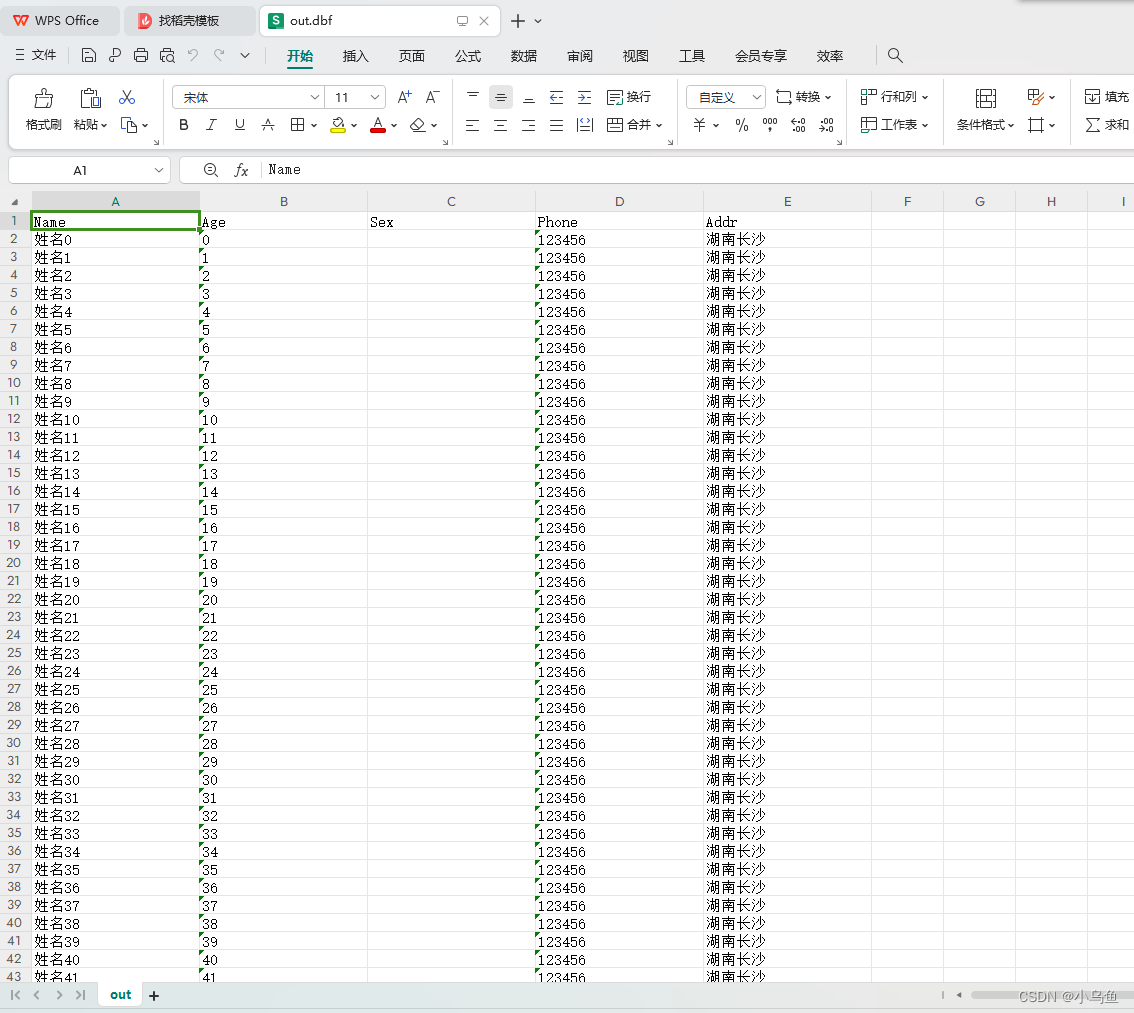
这样实现WhoNet导出基本没问题了

